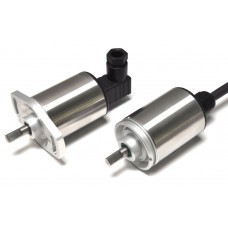
The first time you heard of a rotary sensor it might have been related to your car. You might have heard of it under a different name like rotary variable differential transducer (RVDT) and rotary potentiometer. Despite how they aren’t featured as a highlight in any machine—they are quite diverse with their size, type, and purpose. Here is a list of things you need to know about the rotary position sensor:
How are they used?
A rotary position sensor, like its name suggests, rotates to find out the movement of the object and use that information to do a specific action. Rotary position sensors are used to measure the angle of an incomplete turn and use alternating current (AC) output to relay the information to a central system. A rotary position sensor can be a potentiometer or an RVDT, the difference between them is contact and friction. A potentiometer has direct contact and repeats the motion over and over. Friction can affect the sensor and its readings. An RVDT does need direct contact to do the reading, which increases its accuracy and reliability.
The rotary position sensor is mostly seen in cars. Throttle, steering wheel, and pedal position sensing all make use of it. They give measurements that will identify the next course of action of different gears.
What are their strong points?
The strong points for the RVDT are its low sensitivity to temperature and environment, sturdiness, and simple electronics. Since the RVDT is not affected by friction, it works in harsh environments that are prone to shocks, vibrations, and other external forces. Industries like mining and forestry are some examples of situations that have shaky conditions.
It also works well in the extreme cold or heat. This low sensitivity to temperature is due to the simple electronics of the sensor. The sensor is basic enough for the temperature not to affect the readings. They can work in subzero temperatures for work in the artic or underwater machines.
The sturdiness and long-time use of the RVDT are also about its frictionless technology. They do not experience the same wear and tear of constant motion. With this in mind, they are built to last. In cases where RVDTs do break down, you can narrow down the causes significantly and make proper adjustments for the repair.
What are their weak points?
An RVDT functions best at a certain angle. They operate until ±45°, but their accuracy decreases beyond ±35°. Another weak point might be the price of the unit, especially for custom sizes and designs. However, the weak points of the RVD are not set in stone. Different companies and brands have the final say with these points.
These points only scratch the surface of rotary sensors. They can work alongside other sensors depending on the need of the machine. They are customisable according to the need of the client. There is always room for improvement and innovation, who knows there might be a step above frictionless technology.

